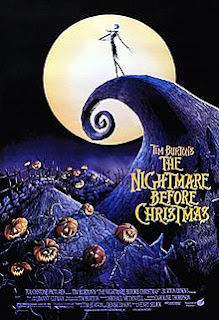Vertigo (1958)
Alfred Hitchcock was considered the
master of suspense, with almost every movie he made. And for a very
good reason. His films always kept the audience guessing, keeping
them on the edge of their seats, and wondering what was going to
happen next. Plus, there was always a hint of tension with each
production Hitchcock worked on, giving the audience something to be
invested in. With 1958's “Vertigo”, which could be argued as
Hitchcock's greatest masterpiece, is a prime example of what he
brought forth to the big screen. However, there are a couple of
issues surrounding the film, but the majority of the movie is
definitely worth checking out. “Vertigo” may not be the master's
greatest work, but it is definitely one of his finest.
The story involves a San Francisco cop
named John “Scottie” Ferguson (James Stewart), who has
acrophobia, or a fear of heights resulting in vertigo, causing the
sensation of being dizzy. Hence the title. One day, an old friend
asks John to spy on his wife, whose behavior has suddenly changed.
The wife, Madeline (Kim Novak), is overseen by John, who wants to
learn more about her, yet becomes slightly attractive to her in the
process. What follows next is, John soon realizes that Madeline might
be involved with something even bigger.
For many aspects the film has,
“Vertigo” can be considered a high class mystery that lives up to
the genre.
For starters, the story is one of most
invested narratives that audiences will thoroughly enjoy. It keeps
the audience guessing as to what might happen next, until the big
final reveal at the end of it all. Especially, considering that the
film runs at a little over two hours in length. However, in order to
fill the void, we have a brilliant orchestrated score from Bernard
Herrmann that more than enough sets the tone of the movie.
Complemented with the brilliant direction of Hitchcock, who sets up
the scenes with great detail, one has to wonder how he did it.
Take, for example, the opening scene of
the movie. It perfectly sets the mood for the character of John, and
details some great camera work, including the panning and zooming out
of the background creating the vertigo effect.
Fortunately, this can be attributed to
the brilliant set design, and cinematography representing a nice
glimpse into the 1950s. Plus, the costumes fit well onto each actor
and actress giving a nice nostalgic look to the film.
Finally, both Stewart and Novak deliver
some great performances, that truly make “Vertigo” a classic. In
fact, this film right here, just may be one of their best movies of
all time.
With that being said, there is one
major and minor problem presented with the movie. The minor problem
is that the story does get somewhat jumbled in the middle, where
things do get complicated and major plot elements occur, and there
are certain plot points which do not have a clear conclusion. More
importantly, there's a subplot involving John and his girlfriend
which starts off nicely in the beginning, but doesn't seem to go
anywhere near the conclusion.
The major problem is with the film's
pacing; it's slow and definitely drags like a rock moving across the
road. However, the film does use this as an advantage to keep the
progression of the story more in tact, but it just feels that if
there had been some more fast sections, then it would have been fine.
Overall, “Vertigo” is a great movie
from Alfred Hitchcock, despite it not being his masterpiece, and yet,
is still a classic nonetheless.




Comments
Post a Comment